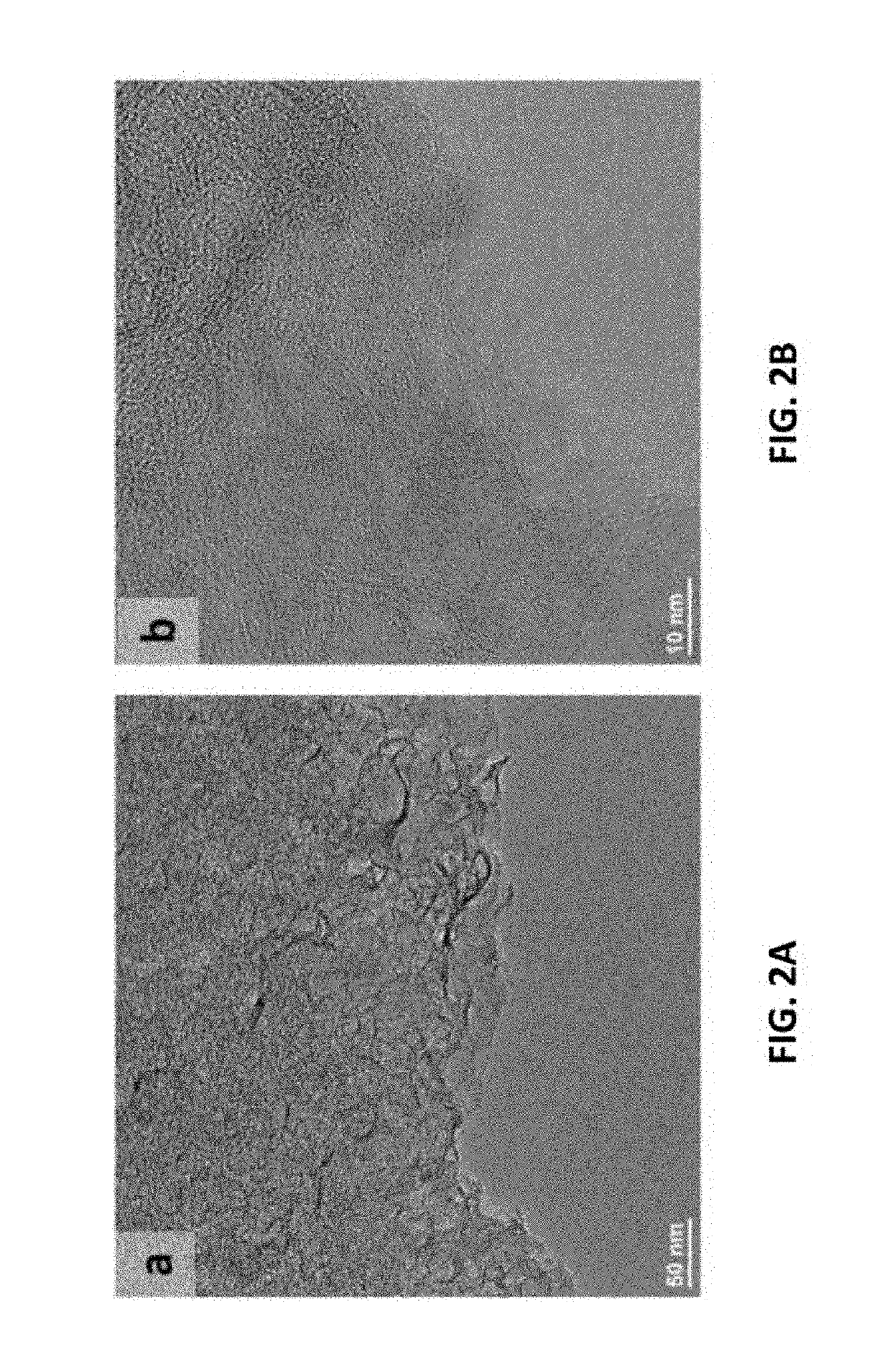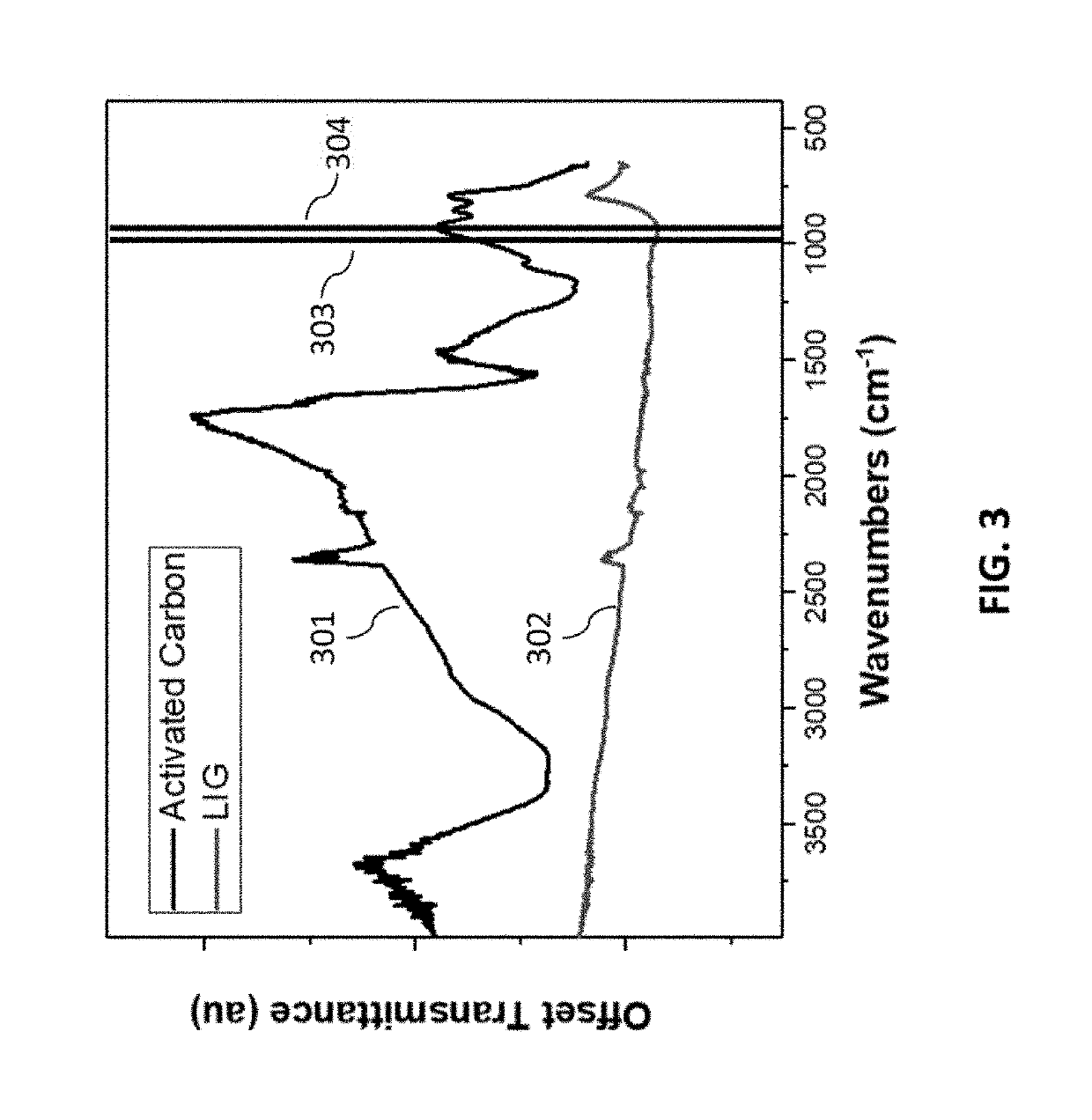Methods of fabricating laser-induced graphene and compositions thereof
a laser-induced graphene and graphene technology, applied in the field of laser-induced graphene fabrication, can solve problems such as polyimide dependence, achieve the effects of less conductive, improve the quality of the lig obtained, and enhance electrical properties
- Summary
- Abstract
- Description
- Claims
- Application Information
AI Technical Summary
Benefits of technology
Problems solved by technology
Method used
Image
Examples
Embodiment Construction
[0229]The present invention expands the range of properties for LIG, especially to tune the hydrophobicity of the LIG surface, and further extends the field of applications for LIG based on such different properties.
Laser-Induced Graphene by Multiple Lasing
[0230]The present invention is directed to a method of using multiple pulsed-laser scribing to convert a wide range of substrates into laser-induced graphene (LIG), i.e., a simple and facile method of obtaining patterned graphene on the surface of diverse materials ranging from natural, renewable precursors (such as cloth and paper) to high-performance polymers (such as Kevlar).
[0231]With the increased versatility of the multiple lase process, highly conductive patterns can be achieved on the surface of a diverse number of substrates in ambient atmosphere. The use of a defocus method of obtaining multiple lases in a single pass of the laser allows for this method to be implemented without significantly increasing processing times ...
PUM
 Login to View More
Login to View More Abstract
Description
Claims
Application Information
 Login to View More
Login to View More - R&D
- Intellectual Property
- Life Sciences
- Materials
- Tech Scout
- Unparalleled Data Quality
- Higher Quality Content
- 60% Fewer Hallucinations
Browse by: Latest US Patents, China's latest patents, Technical Efficacy Thesaurus, Application Domain, Technology Topic, Popular Technical Reports.
© 2025 PatSnap. All rights reserved.Legal|Privacy policy|Modern Slavery Act Transparency Statement|Sitemap|About US| Contact US: help@patsnap.com



